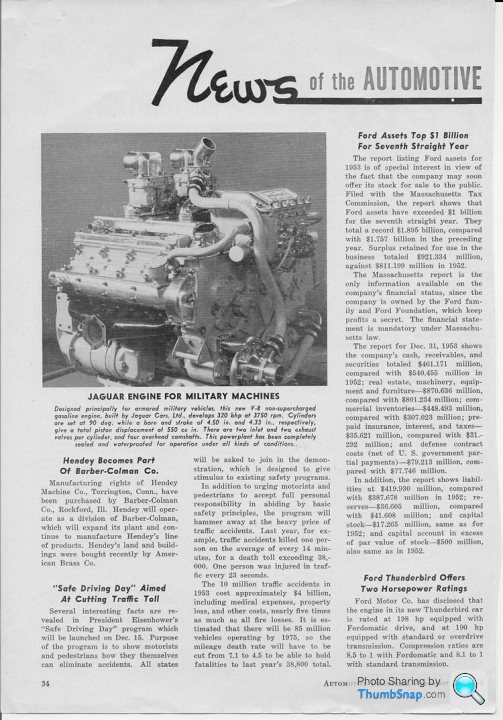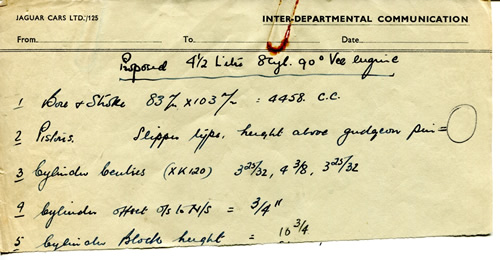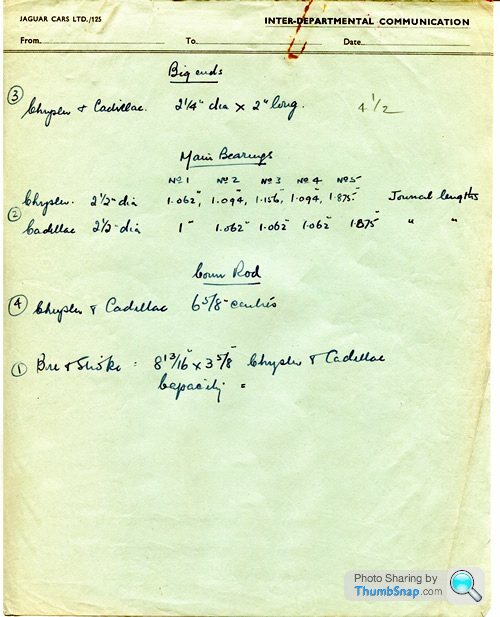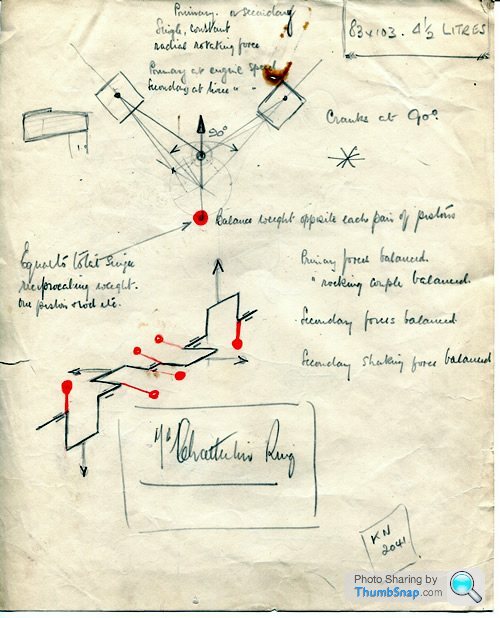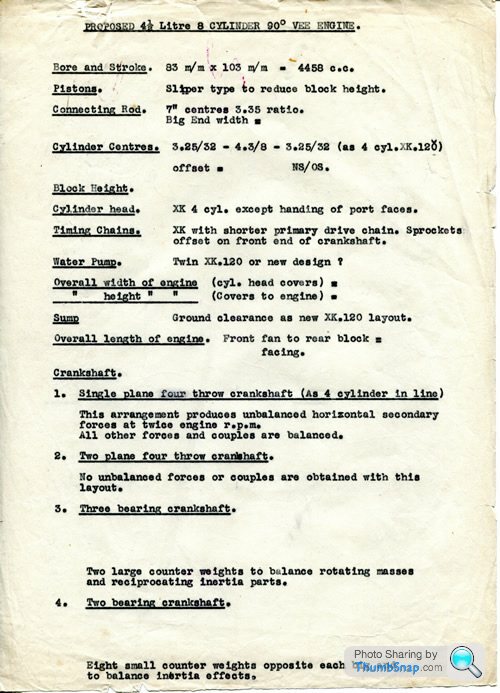Jaguar's XJ13 as Malcolm Sayer Intended
Discussion
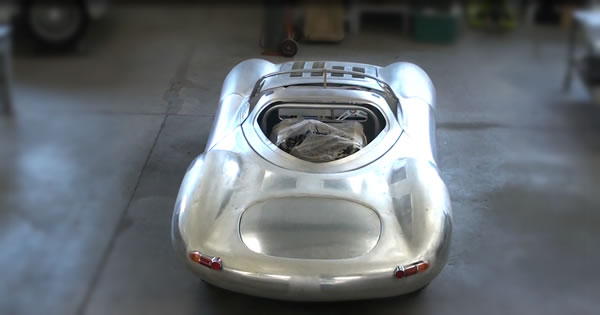
Afternoon Gents. For those who have asked - a bit about progress so far:
"The Gathering"
"Sand-Casting Bellhousings"
"Then and Now"
"Engine Startup"
"Second Startup"
More stuff here - more ...
Hi Sam - I used SolidWorks for the bellhousing.
We have so many technologies available to us now that simply weren't around when these (and similar) cars were first built. It does make me appreciate and respect the old skills all the more. We would now draw something in CAD on a computer screen, check that everything fits, maybe check weights while it is still on the screen. Perhaps even carry out stress analyses etc. We can then design casting patterns for the component (still on a computer screen) that ensure molten metal properly reaches all parts of the mold with no porosity etc. After that, we can 3D print the patterns.
In the past, the engineer would sharpen his pencil, draw it out on paper then have a craftsman produce wooden patterns from the drawing. Those who worked in this way (and those who still do) are nothing less than artists in my opinion!
We have so many technologies available to us now that simply weren't around when these (and similar) cars were first built. It does make me appreciate and respect the old skills all the more. We would now draw something in CAD on a computer screen, check that everything fits, maybe check weights while it is still on the screen. Perhaps even carry out stress analyses etc. We can then design casting patterns for the component (still on a computer screen) that ensure molten metal properly reaches all parts of the mold with no porosity etc. After that, we can 3D print the patterns.
In the past, the engineer would sharpen his pencil, draw it out on paper then have a craftsman produce wooden patterns from the drawing. Those who worked in this way (and those who still do) are nothing less than artists in my opinion!
Roy C said:
DonkeyApple said:
What's the reason in needing to repeatedly point out that 'there is only one XJ13' throughout the site?
I imagine its because there are an increasing number of replicas out there (although none as close to original spec as Neville's), so casual observers may think Jaguar made several.I can't wait to see it "in paint."

I know that subscribers to Pistonheads are likely to be rather more knowledgeable than most about cars in general but other visitors to my own personal site may not be as aware and it sometimes pays to labour the point for the benefit of the casual observer.
RoverP6B said:
The next logical step might be to do a high-tail 7-litre version to go chasing McLarens in the Can-Am/Group 9 class...
Now that's a thought 
When Le Mans proposed a reduction to a maximum of 3 litres Malcolm Sayer made a couple of designs which never saw the light of day. Perhaps one of these instead?
RoverP6B said:
XJ13 said:
Now that's a thought 
When Le Mans proposed a reduction to a maximum of 3 litres Malcolm Sayer made a couple of designs which never saw the light of day. Perhaps one of these instead?
What engine were they going to use? 3-litre XK6? I'm only aware of one mid-engined straight-six car ever, the BMW M1... or did Jaguar envisage a V12-derived V6? I know they tried a V8 version but apparently the 60-degree bank angle meant it ran as rough as a badger's arse...
When Le Mans proposed a reduction to a maximum of 3 litres Malcolm Sayer made a couple of designs which never saw the light of day. Perhaps one of these instead?
As you rightly say, Jaguar did carry out some trials on a 60-degree V8 but this was done on the test-bed simply by removing the first and last pairs of pistons on their quad-cam V12 in 1966/67. They were perfectly aware that vibration could be an issue but wanted to quantify it in practice. Unsurprisingly, it did run as rough as a badger's arse.
They had been producing 90-degree V8s for many years before that but these were for military uses and none found their way into production cars as far as I am aware.
Edited by XJ13 on Monday 20th April 02:54
Here's a picture of one of Sayer's 3-litre sportscar designs as mentioned above.

I remember reading somewhere these designs assumed a V12 but for the life of me can't remember where I read it. I can't tell from the drawing how many exhausts it has. I could be completely wrong of course and maybe a straight six along the lines of the fuel-injected 6-cyl as posted by Lowdrag was envisaged. The "braking fins" looked a little "old school" for the time it was drawn (1967)? Perhaps he had a secondary purpose in mind? Stability under braking? Any aerodynamicists out there?

I remember reading somewhere these designs assumed a V12 but for the life of me can't remember where I read it. I can't tell from the drawing how many exhausts it has. I could be completely wrong of course and maybe a straight six along the lines of the fuel-injected 6-cyl as posted by Lowdrag was envisaged. The "braking fins" looked a little "old school" for the time it was drawn (1967)? Perhaps he had a secondary purpose in mind? Stability under braking? Any aerodynamicists out there?
Edited by XJ13 on Monday 20th April 21:30
a8hex said:
Assuming that the thing on the rear view in the sketch just inside the line of the wheel is the exhaust and not a light then it looks to only have a single exhaust on each side.
Hi Ken - I agree with you. Although only one exhaust is shown, it is on the right side of the car which almost certainly rules out a straight six.a8hex said:
The quad cam V12 was the work of Haynes and Baily. This was also tried out in a Mk X and proved to be rather quick.
Shouldn't get me talking about my "pet project" ... 
I actually own this very engine which was the work of Claude Baily under the direction of William Heynes. These engines were only ever installed in either the XJ13 or one of two Mk10 "mules". My own engine was tested in both Mk10s over a period of almost 5 years and ended its time at Jaguar with a run on the test-bed in the December of 1969 where its exhaust emission performance was compared against Walter Hassan / Harry Mundy's eventual replacement - the SOHC V12. The XJ13 project itself had already finished two years earlier.
The quad-cam was designed by Baily first-and-foremost as a racing engine and was never suitable as a "production" engine. Even in the massive Mk10 engine bay it was too wide and there was insufficient room for the required ancilliaries. The steering was also limited as there wasn't enough room for full lock. When installed in the first Mk10 my engine still had its Lucas mechanical fuel injection (later replaced by a sextet of SUs) and its performance would have been "interesting"

a8hex said:
Claude Baily had done the initial design study for the V12 back in 1953 but the idea dated back even further to the time when the XK engine was being developed in the late 40s. Harry Mundy didn't join Jaguar until 1964 by which point I seem to remember the V12 was already running in the MkX.
I now have evidence that Baily's first 60-degree quad-cam V12 ran as early as 1951. The initial design study will have gone back to some time well before 1951. Here is Jaguar's performance data for that engine: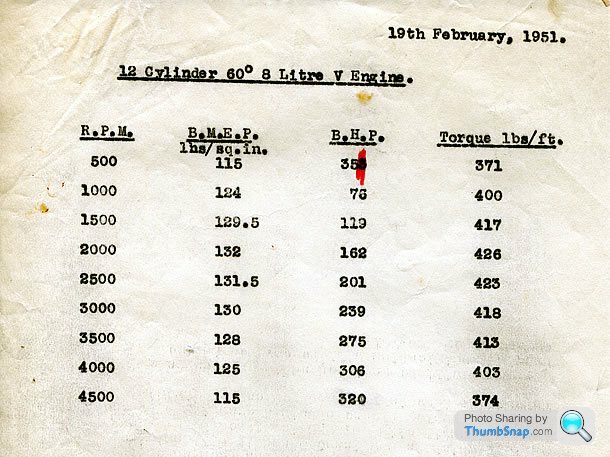
The 60-degree V12 took its basic architecture from Baily's earlier 90-degree V8s which were used in military applications. Here is a page of Baily's sketches from the late-1940s showing his 8-litre V8:
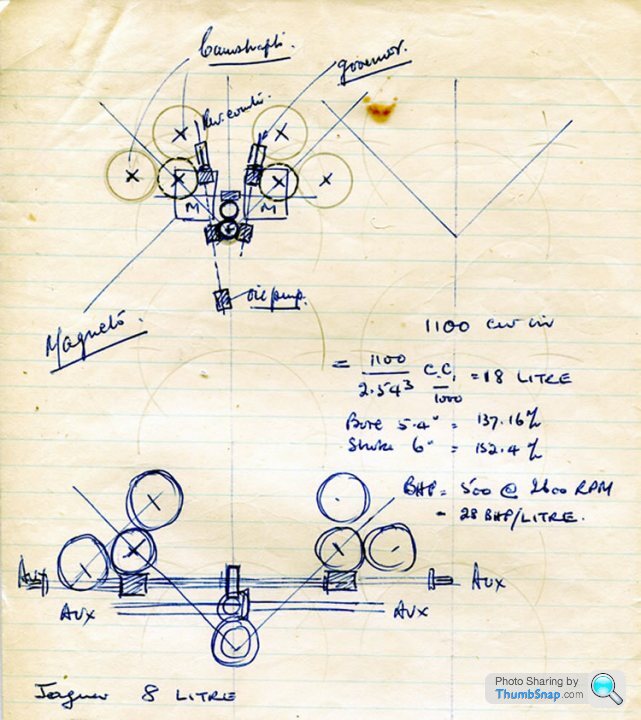
I have some early photos of these early "tank" engines but can't put my finger on them right now (really should get round to properly organising my images ....)
a8hex said:
Harry Mundy didn't join Jaguar until 1964 by which point I seem to remember the V12 was already running in the MkX.
Ken - the engine (my engine) was first installed in a Mk10 in 1965. I recently hosted a small event to celebrate its startup 50 years later. It was Jaguar's first V12 to power a car. XJ13 didn't get its engine until 1966.Thanks for the kind comments gents.
As the FIA rules stand at present, strictly speaking, the only way a replica can race in Historics with a FIA HTP (Historic Technical Passport) is if the original raced in period. Sadly this isn't the case with the XJ13. Fortunately there are many events in Europe where the organisers accept cars without a HTP and allow them in anyway. Our American cousins take a different view and like to do things their own way. The "I" in FIA may stand for "Internationale" but they are happy to put two fingers up to the FIA and allow me to race in the US under their own rules. It is early days yet but I do live in hope of one day sharing the same piece of tarmac as those mighty GT40s and sublime Ferraris. Time, and the support of fellow-enthusiasts such as those in this forum, will tell.
I am under no illusions and know that the question of "what if?" will never be answered - even if my replica is allowed to race. After all, the XJ13 hasn't had the benefit of the best part of 50 years continuous development that cars such as the GT40 have enjoyed. I suspect they are lapping much faster and more reliably now than they ever did in period. The XJ13 quite definitely missed its "window of opportunity". It should have raced as early as 1965 with maybe a team of cars racing in 1966. It wasn't until 1967 before the GT40 came into its own and things might have been very different if Jaguar had got one to Le Mans in '65 or '66 - we will never know.
As the FIA rules stand at present, strictly speaking, the only way a replica can race in Historics with a FIA HTP (Historic Technical Passport) is if the original raced in period. Sadly this isn't the case with the XJ13. Fortunately there are many events in Europe where the organisers accept cars without a HTP and allow them in anyway. Our American cousins take a different view and like to do things their own way. The "I" in FIA may stand for "Internationale" but they are happy to put two fingers up to the FIA and allow me to race in the US under their own rules. It is early days yet but I do live in hope of one day sharing the same piece of tarmac as those mighty GT40s and sublime Ferraris. Time, and the support of fellow-enthusiasts such as those in this forum, will tell.
I am under no illusions and know that the question of "what if?" will never be answered - even if my replica is allowed to race. After all, the XJ13 hasn't had the benefit of the best part of 50 years continuous development that cars such as the GT40 have enjoyed. I suspect they are lapping much faster and more reliably now than they ever did in period. The XJ13 quite definitely missed its "window of opportunity". It should have raced as early as 1965 with maybe a team of cars racing in 1966. It wasn't until 1967 before the GT40 came into its own and things might have been very different if Jaguar had got one to Le Mans in '65 or '66 - we will never know.
Gassing Station | Classic Cars and Yesterday's Heroes | Top of Page | What's New | My Stuff





